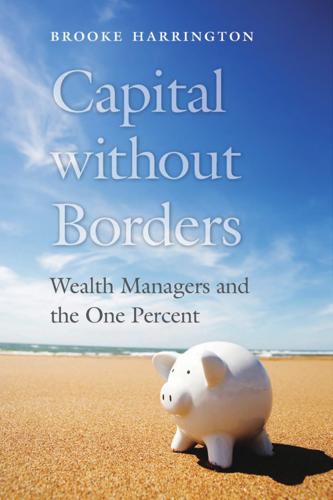
Capital Without Borders
by
Brooke Harrington
Published 11 Sep 2016
As one historical review of wealth and inheritance put it, “money makes money” not because accumulation is natural or inevitable but because “rich people … can afford the best investment advisers, the best accountants, the best lawyers.”69 Thus, to understand the sources of conflict and change around inequality, it is crucial to examine the actors who shape the larger institutions. Creating dynastic wealth A defining characteristic of dynastic wealth is that it endures and becomes “relatively indestructible” through legal practices and structures.70 In the past, those practices took the form of entail, primogeniture, and trusts; now, through the innovations introduced by wealth managers, there are many new ways of achieving wealth protection.
…
By identifying the central role of wealth managers in these processes, this book addresses a major theoretical challenge in the study of stratification: “to ascertain who makes things endure and how.”26 While other research has posited a link between professions and inequality, I look specifically at a new group of actors who are “crucial” and “irreplaceable” to global stratification processes, along with the techniques they use to defend the wealth of their clients.27 The impact of the profession hinges on its deep historical connections to dynastic wealth, dating back to feudal Europe, coupled with its use of innovative legal and financial techniques, putting it at the forefront of contemporary global finance. Ordinarily, wealth managers are employed by clients who have already accumulated their fortunes, so the professional’s job is less to increase the value of those assets than to protect them from dissipation at the hands of tax authorities, creditors, and heirs.
…
Creating asset-holding structures to transfer large fortunes within families remains the bread-and-butter work of most wealth managers today: hence the inclusion of the term “estate practitioners” in the name of the professional society. This practice, which C. Wright Mills called the “pass[ing] on to children of strategic positions in the apparatus of appropriation,” affects far more than the private wealth and interpersonal relationships of individual families.52 By consolidating resources over generations, it creates dynastic wealth, which in turn fuels a political power elite—a new aristocracy, symbolized by people such as Mitt Romney and George Bush, whose inheritances and multiple trust funds were factors in their ability to run for the U.S. presidency.53 In ensuring that those family assets are not for sale to others—and the wealth not redistributed through taxation—wealth managers deprive markets of liquidity, hindering their development.54 Families, states, and markets are among society’s key institutions.55 The work of wealth managers spans these domains, bringing them together in ways that are at times conflicting, at other times mutually reinforcing.
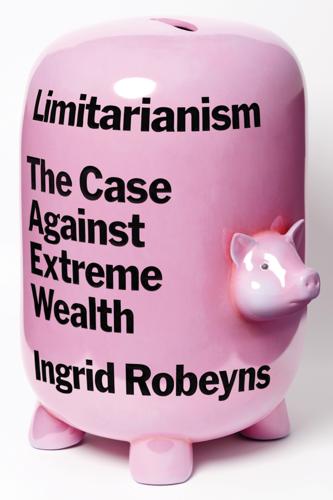
Limitarianism: The Case Against Extreme Wealth
by
Ingrid Robeyns
Published 16 Jan 2024
The central goal of wealth holders to make their capital accumulate further is evident from various sources, including sociological research and accounts of those who are part of, or grew up, in that world. See also the following autobiographical accounts: Collins, The Wealth Hoarders, pp. 1–15; Abigail Disney, “I Was Taught from a Young Age to Protect My Dynastic Wealth,” Atlantic, June 17, 2021, theatlantic.com/ideas/archive/2021/06/abigail-disney-rich-protect-dynastic-wealth-propublica-tax/619212/; and Engelhorn, Geld. 29. Dean J. Machin, “Political Inequality and the ‘Super-Rich’: Their Money or (Some of) Their Political Rights,” Res Publica 19 (2013), pp. 121–39. 5. It’s Setting the World on Fire 1.
…
The first rule a rich person should follow is to earn their money in a morally sound way, before even thinking about philanthropy. Some might take offense here. Is it not wildly misplaced and even crass to start asking critical questions of someone who gave away his entire fortune, almost $8 billion? Most super-rich people give only a tiny fraction of that amount, and instead prefer to build up dynastic wealth, passing most of it on to their children. Or they spend it on things as crazy and wasteful as golden toilets. Are we expecting philanthropists to be saints? Of course, if I were to meet Chuck Feeney, I would not start complaining about his taxes. This is not about the individual. This is about social structures, and about politics.
…
It all depends on their priorities.8 * * * Perhaps because of all this, some rich philanthropists are reluctant to entrust governments with the redistribution of their wealth. This point was made powerfully by Abigail Disney in a 2021 article for the Atlantic. As we have seen, Disney is an outspoken critic of growing wealth inequalities in the US, and a member of the Patriotic Millionaires. In her article, she describes “the blueprints for dynastic wealth” that are used to socialize children from rich families. There are clear rules. Never touch the “corpus” (that is, spend the capital that you have inherited), so that you can leave it to your children. Marry someone from your own economic class, since too great a difference in income and assets (and therefore power) might lead to friction.
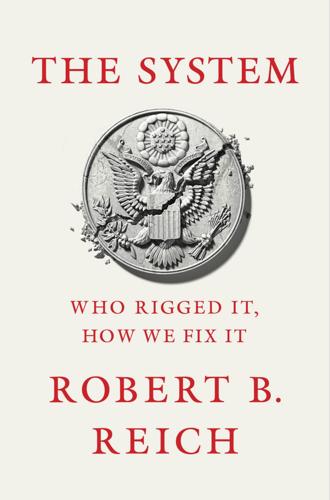
The System: Who Rigged It, How We Fix It
by
Robert B. Reich
Published 24 Mar 2020
After a few generations of this, almost all of the nation’s wealth will be in the hands of a few thousand families. Dynastic wealth runs counter to the ideal of America as a meritocracy. It makes a mockery of the notions that people earn what they’re worth in the market and that economic gains should go to those who deserve them. It puts economic power into the hands of a relatively small number of people who have never worked but whose investment decisions have a significant effect on the nation’s future. It creates a self-perpetuating aristocracy that is antithetical to democracy. Dynastic wealth also magnifies race and gender disparities. Because of racism and sexism, women and people of color not only earn less, they have saved far less—which is why the racial wealth gap and gender wealth gap are huge and growing.
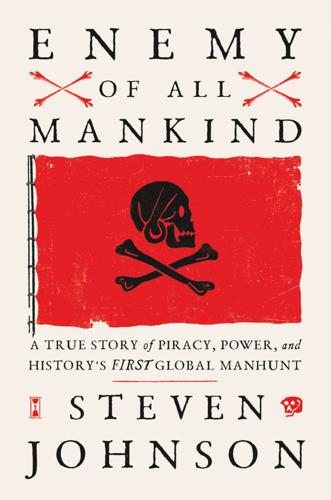
Enemy of All Mankind: A True Story of Piracy, Power, and History's First Global Manhunt
by
Steven Johnson
Published 11 May 2020
Immense risk, unbearable living conditions, and a very real chance that you would end your life disemboweled in the middle of an ocean, five thousand miles from home—you could tolerate all those horrors knowing two things: first, that you were part of an enterprise that could potentially produce immense profits in a matter of months; and second, that the organization would distribute that fortune equitably among all the participants. The pirates were men living in a world dominated by people like Lord Houblon or Aurangzeb, heirs to dynastic wealth that went back many generations: the number of commoners who had escaped their roots and made their own fortune, as Every had declared to Captain Gibson fifteen months before, was vanishingly small. That was the great promise of the pirate’s life: You could break free from the cycle of servitude and poverty.
…
While the folklore version of Henry Every’s story would later claim that the pirate acquired enough gold in the Gunsway attack to live as a “pirate King” for the rest of his life, his official share from the heist was £2,000. It was enough money to secure a life of leisure for the remainder of his days, but still short of dynastic wealth. Of course, to enjoy that life of leisure, Every would have to slip free of the dragnet that was surely coming for him. Every and his men obviously couldn’t sail the Fancy back to the Thames dockyards and stroll off the ship as heroes, the way Drake had done. To escape the law—and the bounty hunters who might also be on the lookout for them—they would need to get rid of the ship and somehow launder the money they had pilfered from the treasure fleet.
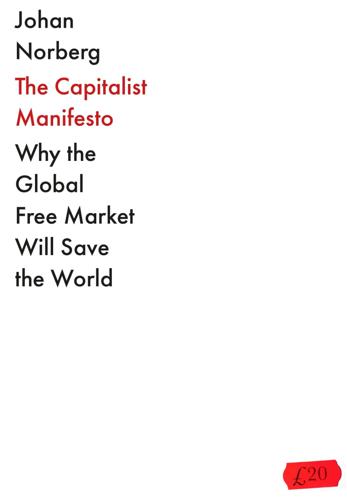
The Capitalist Manifesto
by
Johan Norberg
Published 14 Jun 2023
When he looks at Forbes’ list of billionaires, he seems to see that over a certain limit, inherited properties ‘grow at extremely high rates’, much faster than the average fortune. Therefore, they will leave the rest of us behind.11 That is strange because when other researchers look at Forbes’ list of 400 billionaires in 1982, they find that only sixty-nine of them or their heirs remain in 2014, and their conclusion is that ‘dynastic wealth accumulation is simply a myth.’12 Another researcher looked at the individuals who remained on the Forbes list between 1987 and 2014 and the 327 who left it, and calculated that their average annual wealth increase was a paltry 2.4 per cent. That is only a third of what they would have received if they had invested the money in a passive US index fund during the same period.13 Far from accumulating more and more, the richest are losing out in terms of overall wealth growth due to philanthropy and taxes, consumption, poor investment decisions and, for some of them, hefty fines (because a few really are crooks).
…
It changes very fast depending on the temporary stock prices of the companies the super-rich founded, so I’ll continue to use Gates as an example for a while. 9. Thomas Piketty, Capital in the Twenty-First Century, Belknap Press, 2014, p.444ff. 10. Ibid., p.31. 11. Ibid., pp.435–9. 12. Robert Arnott, William Bernstein & Lillian Wu, ‘The myth of dynastic wealth: The rich get poorer’, Cato Journal, vol.35, no.3, 2015. 13. William McBride, ‘Thomas Piketty’s false depiction of wealth in America’, Tax Foundation Special Report no.223, July 2014. Chris Edwards & Ryan Bourne, ‘Exploring Wealth Inequality’, Policy Analysis, no.881, Cato Institute, 5 November 2019. 14.
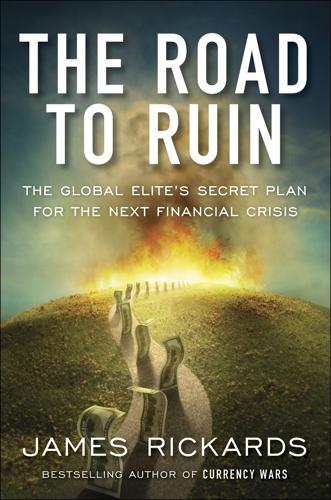
The Road to Ruin: The Global Elites' Secret Plan for the Next Financial Crisis
by
James Rickards
Published 15 Nov 2016
Style drift into merger arb and rejection of JPMorgan’s 1996 buyout offer were the first nails in LTCM’s coffin. The last nail came in 1997, just prior to the collapse, when the partners embarked on a plan to buy out their original investors. They would own the management company, and the fund itself. This plan was a portal to dynastic wealth. By September 1997, LTCM’s fund capital approached $7 billion, a huge leap from the $1 billion we started with in 1994. Still, investment returns were declining. LTCM’s large size in favored trades meant diminishing marginal returns, as those trades grew even larger. Banks were copying LTCM’s strategies, making those trades less profitable for all participants.
…
The Colonna family remains wealthy after surviving wars, plagues, revolutions, lootings, and the ravages of time. Survival was not all about assets. The Colonnas were deeply involved in Roman politics and the Church. Friends at the Habsburg court proved helpful at crucial junctures. Yet others had friends at court and did not survive nearly so well. The difference between mere money and dynastic wealth is profound. In Palazzo Colonna, you see the difference all around. Conclusion On February 11, 2015, a bitterly cold evening, I took part in a formal debate before a live audience in a theater just off Broadway on Manhattan’s upper west side. The debate proposition was a loaded gun: “Declinists Be Damned: Bet on America.”
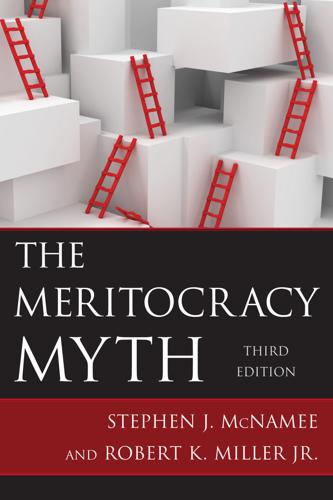
The Meritocracy Myth
by
Stephen J. McNamee
Published 17 Jul 2013
These vast amounts of wealth will not simply evaporate between generations, and indeed much of the intergenerational transfer will reach not only to the current generation of baby boomers but to their children as well, further solidifying the continuity of wealth inequality overtime. Indeed, the combination of increasing amounts and concentration of wealth at the top of the system and the stability of wealth and inequality across generations gives rise to what some observers suggest is the unfolding of a second Gilded Age of dynastic wealth in America (Grusky and Kricheli-Katz 2012; Freeland 2012). Despite the evidence of wealth stability over time, much is made of the investment “risks” that capitalists must endure to justify returns on such investments. And to some extent, this is true. Most investments involve some measure of risk.
…
The reproduction of cultural capital has occurred with enough frequency to have generated commonplace stereotypes of subcultural differences among occupational groups, status groups, and social classes. Even within social classes, subcultural differences are manifest. For example, within the upper class, the upper-upper class, with its “old money” (dynastic wealth) and its cultural capital displayed as refined manners, styles, and tastes (Fabrikant 2005), is contrasted with the lower-upper class, the nouveau riche, whose members may possess as much or even more economic capital but are “betrayed” by lack of cultural capital, as indicated by deficiencies in savoir faire, unrefined manners, lack of style, and pedestrian tastes (Fabrikant 2005; Steinhaur 2005; Frank 2007).
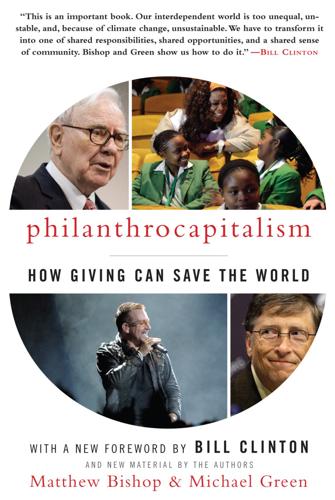
Philanthrocapitalism
by
Matthew Bishop
,
Michael Green
and
Bill Clinton
Published 29 Sep 2008
Long before he announced he was giving away most of his fortune, Warren Buffett had said publicly that his children would not inherit the lot—instead they would get just enough to enable them to do anything, but not so much that they can do nothing, as he put it. “I don’t believe in dynastic wealth,” he explained when he made his gift to the Gates Foundation. He dismissed the beneficiaries of dynastic wealth as “members of the lucky sperm club,” asserting his belief that America should be a meritocracy. Yet he also endowed foundations run by his children, as well as a foundation started with his late wife, Susan. Perhaps being born with a silver spoon in your mouth will become the mark of a future vocation in philanthropy.

The End of Work: Why Your Passion Can Become Your Job
by
John Tamny
Published 6 May 2018
Brooks, Who Really Cares: The Surprising Truth about Compassionate Conservatism (New York: Basic Books, 2006), xii. 2.Nikhil Deogun, “The Legacy: Roberto Goizueta Led Coca-Cola Stock Surge, and Its Home Prospers,” Wall Street Journal, October 20, 1997. 3.Ibid. 4.Ibid. 5.Ibid. 6.John Tamny, “If Charity Is Their Goal, Gates and Buffett Should Hoard Their Wealth,” Forbes.com, June 17, 2010. 7.Source: Bill & Melinda Gates Foundation Fact Sheet, http://www.gatesfoundation.org/Who-We-Are/General-Information/Foundation-Factsheet. 8.Deepa Seetharaman, “Zuckerberg Fund to Invest $3 Billion,” Wall Street Journal, September 22, 2016. 9.Sarah Frier, “Mark Zuckerberg Philanthropy Pledge Sets New Giving Standard,” Bloomberg, December 1, 2015. 10.Robert Arnott, William Bernstein, and Lillian Wu, “The Myth of Dynastic Wealth: The Rich Get Poorer,” Cato Journal, Vol. 35 (Fall 2015): 461–463. 11.Arthur C. Brooks, Who Really Cares, 3. 12.Ibid., 13.Ibid., 7. 14.Ibid., 77. 15.Ibid., 78. 16.Ibid., 124. 17.Blair Tindall, Mozart in the Jungle: Sex, Drugs and Classical Music (New York: Atlantic Monthly Press, 2005),149. 18.Ibid., 50. 19.Ibid., 50. 20.Ibid., 53–54. 21.Ibid., 154. 22.Ibid., 208. 23.Ibid., 22. 24.Ibid., 86. 25.Ibid., 97. 26.Ibid., 209. 27.Ibid., 304. 28.Monte Burke, “College Coaches Deserve Their Pay,” Wall Street Journal, August 30, 2015. 29.Ibid. 30.Ibid. 31.Ibid. 32.Brooks, Who Really Cares, 119. 33.Brooks, Who Really Cares, 139. 34.Rebecca R.
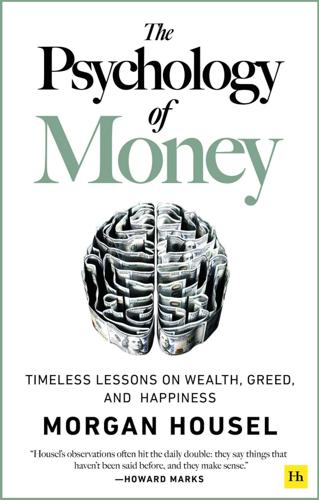
The Psychology of Money: Timeless Lessons on Wealth, Greed, and Happiness
by
Morgan Housel
Published 7 Sep 2020
GE stock fell from $40 in 2007 to $7 by 2018. Blame placed on CEO Jeff Immelt—who ran the company since 2001—was immediate and harsh. He was criticized for his leadership, his acquisitions, cutting the dividend, laying off workers and—of course—the plunging stock price. Rightly so: those rewarded with dynastic wealth when times are good hold the burden of responsibility when the tide goes out. He stepped down in 2017. But Immelt said something insightful on his way out. Responding to critics who said his actions were wrong and what he should have done was obvious, Immelt told his successor, “Every job looks easy when you’re not the one doing it.”

The Price of Time: The Real Story of Interest
by
Edward Chancellor
Published 15 Aug 2022
Aristotle, Politics, in Early Economic Thought: Selected Writings from Aristotle to Hume, ed. Arthur E. Monroe (Mineola, NY, 2006). Arkwright, Francis, Memoirs of the Duke de Saint-Simon, An Abridged Translation (London, 1918). Arnott, Rob, Bernstein, William J. and Wu, Lillian, ‘The Myth of Dynastic Wealth: The Rich Get Poorer’, Cato Journal, 35 (3), October 2015. Arnott, Rob, Cornell, Bradford and Shepherd, Shane, ‘Yes. It’s a Bubble. So What?’ Research Affiliates, April 2018. Arslan, Yavuz, Contreras, Juan, Patel, Nikhil and Shu, Chang, ‘Globalisation and Deglobalisation in Emerging Market Economies: Facts and Trends’, BIS Working Paper, December 2018.
…
Góes found that a positive shock to the rate of return relative to growth leads to an expected decrease in the income share of the top 1 per cent in three-quarters of all countries. 128. Lindert and Williamson, Unequal Gains, p. 139. 129. See Rob Arnott, William J. Bernstein and Lillian Wu, ‘The Myth of Dynastic Wealth: The Rich Get Poorer’, Cato Journal, 35 (3), October 2015. This paper argues that most wealth is first-generation wealth and that family fortunes dissipate with the passing of time. 130. Piketty, Capital, p. 172. 15. THE PRICE OF ANXIETY 1. Brendan Brown, A Global Monetary Plague: Asset Price Inflation and Federal Reserve Quantitative Easing (London, 2015), p. 133. 2.

The Bill Gates Problem: Reckoning With the Myth of the Good Billionaire
by
Tim Schwab
Published 13 Nov 2023
A century and a quarter ago, Andrew Carnegie was a lonely voice encouraging his wealthy peers to give back substantial portions of their wealth. Today, a growing number of very wealthy people are pledging to do just that. Philanthropy done well not only produces direct benefits for society, it also reduces dynastic wealth. Melinda and I are strong believers that dynastic wealth is bad for both society and the children involved. We want our children to make their own way in the world. They’ll have all sorts of advantages, but it will be up to them to create their lives and careers. Through a two-pronged approach of taxing the purchase of luxury items and pushing the superrich to give away their money voluntarily, Gates has a plan for wealth inequality.
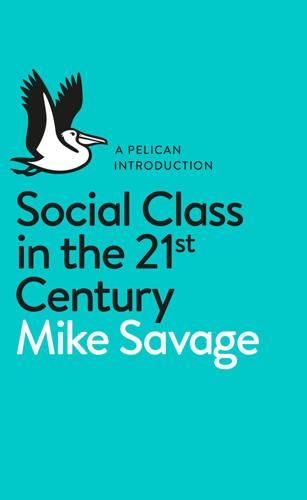
Social Class in the 21st Century
by
Mike Savage
Published 5 Nov 2015
However, it is also clear that the prospects of becoming part of this class are very different, according to social background, and it thus reproduces forms of privilege. This elite is not a cohesive formation. It is internally differentiated along occupational-sector lines. Although we have no evidence about inheritance, it is likely that membership of this class is based less upon dynastic wealth, and that it has a considerable proportion of the self-made. However, it is not fractured upon geographical lines. The geographical concentration in London and the south-east is vital in giving it a coherence and solidarity which would otherwise be lacking. We can understand London as a fundamental seat and site of the new ‘ordinary’ elite.
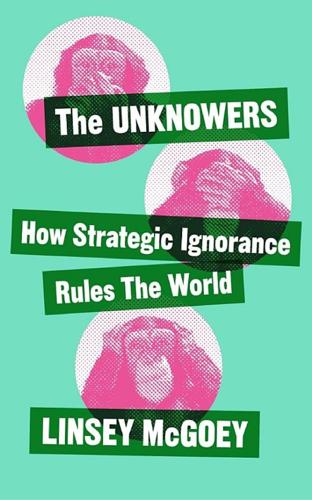
The Unknowers: How Strategic Ignorance Rules the World
by
Linsey McGoey
Published 14 Sep 2019
During the American War of Independence, he also supported American colonists in their fight against British oppression. But when the French Revolution succeeded in toppling the French monarchy in the late 1780s, Burke condemned the revolutionaries, demanding a restoration of aristocratic privilege and the protection of dynastic wealth. He derided the idea that workers in France could be the natural equals of their aristocratic rulers.34 His condemnation of the French Revolution led to swift and powerful rebukes from British democrats, including Mary Wollstonecraft, who wrote ‘A Vindication of the Rights of Men’ (1790), published a few months before Thomas Paine’s more famous rebuttal to Burke in his essay ‘Rights of Man’ (1791).
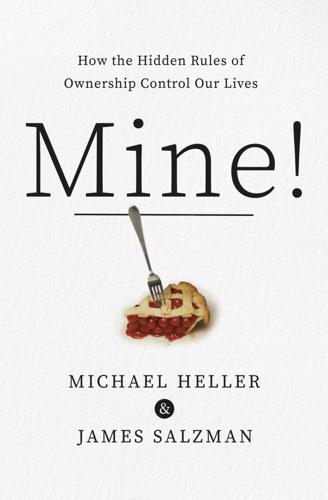
Mine!: How the Hidden Rules of Ownership Control Our Lives
by
Michael A. Heller
and
James Salzman
Published 2 Mar 2021
Many hundred years must roll away before we shall be corrupted.” Jefferson was right on the danger; Adams on the timeline; and Gray on the consequences. A country created in opposition to inherited status now tolerates states like South Dakota and Nevada whose legislatures affirmatively promote dynastic wealth and responsibility evasion. This is not a progressive position, certainly. But neither does it fall within any intelligible version of American conservatism, a political tradition committed to individual freedom, opportunity, and markets. Today’s artificial aristocracy radiates an above-the-law attitude.

Boom: Bubbles and the End of Stagnation
by
Byrne Hobart
and
Tobias Huber
Published 29 Oct 2024
Essentially, there are three relevant categories: state-owned or state-controlled companies, which are common outside of the US and include businesses that were built by nationalizing assets from other oil companies, like Saudi Aramco, as well as businesses built from the ground up, like China’s Sinopec; integrated “energy majors” that are involved in all stages of the oil and gas industry, from exploration to refining to sales, but aren’t part of the government, such as Exxon and Chevron; and independents—smaller oil and gas companies, some of which may not own any producing assets at all. These latter businesses can be financially shaky, but the successful ones produce dynastic wealth. J. Paul Getty and H. L. Hunt, both independent oil operators, were the richest people in the US at different points in the mid-20th century. The fracking revolution is a story about the interaction between the integrated majors and the independents. Techniques that were refined at larger companies with extensive R&D budgets and the ability to amortize the cost of new techniques over numerous existing wells were pursued and perfected by the independents, who had the risk tolerance necessary to take them to their limit.
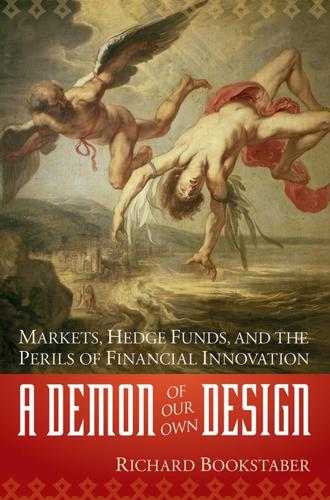
A Demon of Our Own Design: Markets, Hedge Funds, and the Perils of Financial Innovation
by
Richard Bookstaber
Published 5 Apr 2007
A critical decision point for LTCM actually happened a year before the firm’s failure, when it decided to give back client capital so that the partners could take more of the trading revenue for themselves. This move was hotly contested. Two of the most aggressive and outspoken partners, Larry Hilibrand and Victor Haghani, wanted to build up “dynastic” wealth—apparently, over-the-top wealth didn’t quite cut it—and to do that they wanted to lever their holdings as far as they could. Bob Merton argued that the firm could maximize its value by leveraging its name rather than its capital. LTCM had a mystique that extended even beyond its record. If it took its trading ability and married it to large funds, it could make small returns, but on a far larger capital base, and do so with much less risk.
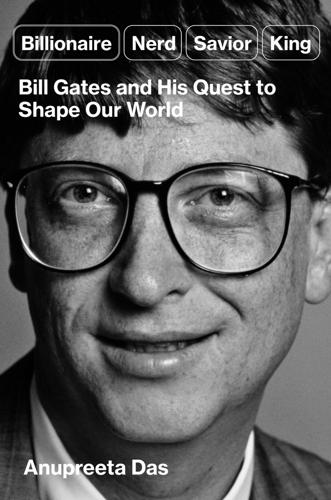
Billionaire, Nerd, Savior, King: Bill Gates and His Quest to Shape Our World
by
Anupreeta Das
Published 12 Aug 2024
Much to the surprise and delight of executives at Harvard University Press, the publisher, Capital in the Twenty-First Century became its best-selling book ever. In 2020, Netflix produced a feature documentary based on Piketty’s core arguments. Piketty makes the point that over time, the return on invested capital will outpace the growth in income, creating the conditions for dynastic wealth. He put the weight of an entire history of capitalism, with its propensity to make the rich richer, on a simple equation: r>g. The “r” stood for the rate of return on private capital while the “g” stood for the rate of economic growth. Redistributive policies, which taxed capital on a progressive basis, were the only solution for reducing wealth inequality, he argued.

Stuck: How the Privileged and the Propertied Broke the Engine of American Opportunity
by
Yoni Appelbaum
Published 17 Feb 2025
They erected an elaborate social hierarchy, but also offered a fictive solidarity to the adult white men of the colony, extending social recognition in exchange for their aid in policing their enslaved laborers. And in a colony without a formal aristocracy, they worshipped hereditary privilege as an aspirational ideal. In Virginia, as in England, to succeed was to own enough land to free yourself from arduous labor, to become the master of your own domain, and to establish dynastic wealth. Even, or perhaps especially, many of the small planters and tenant farmers and servants who could not enjoy these privileges aspired to them. Virginia’s pseudo-aristocracy, with its exaltation of individual liberty and hierarchy and dynasty, contrasted sharply with New England’s veneration of mobility and exclusivity and productivity.
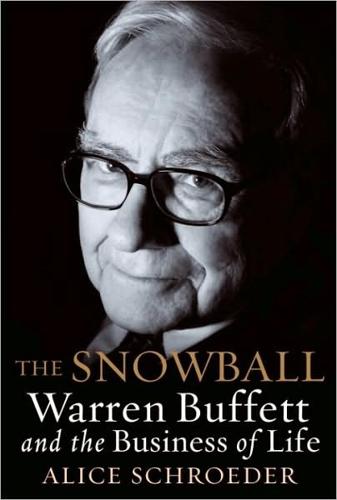
The Snowball: Warren Buffett and the Business of Life
by
Alice Schroeder
Published 1 Sep 2008
His reasoning was that Howie would steward the culture after he was gone. He knew that his son was beginning to mature and was a principled individual. Buffett now had to do some mental backflips, however, to reconcile all the statements he had made over the years—denunciations of the evils of the “divine right of the womb,” dynastic wealth, and advantages based on parentage rather than merit—with his decision to make his relatively untested son the chairman of Berkshire Hathaway after he was gone. And it was not clear how Howie’s role would complement that of the next CEO of Berkshire. That may have been the point. Every sign now indicated that Buffett would see to it that power would not be concentrated in any one individual after his death.
…
I don’t like anything where the bottom twenty percent keep getting a poorer and poorer deal.” But the debate over estate taxes turned shrill and bitter. Buffett was portrayed as a silver-spooned populist, a rich old crocodile who was trying to keep the next generation from bootstrapping its way to success in the classic American entrepreneurial manner.31 “Dynastic wealth turns a meritocracy upside down,” he wrote to Senator Ken Salazar. “In effect it says that the people who should allocate the resources of this country should be the descendants of those who excelled in amassing resources long ago.”32 Subtly or not, the estate tax feud was informed by the issue of Buffett’s own money.
…
If I had been born long ago or in some other country, my particular wiring would not have paid off the way it has. But in a market system, where capital-allocation wiring is important, it pays off like no other place. “All along, I’ve felt the money was just claim checks that should go back to society. I am not an enthusiast for dynastic wealth, particularly when the alternative is six billion people who’ve got much poorer hands in life than we have, getting a chance to benefit from the money. And my wife agreed with me. “It was clear that Bill Gates had an outstanding mind with the right goals, focusing intensely with passion and heart on improving the lot of mankind around the world without any regard to gender, religion, color, or geography.
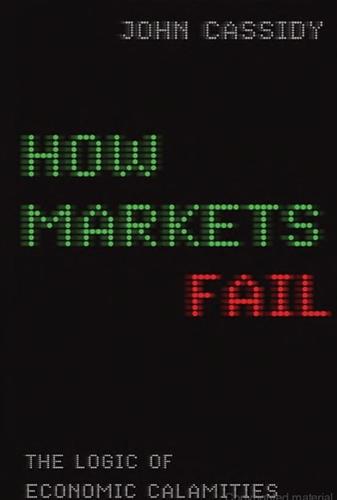
How Markets Fail: The Logic of Economic Calamities
by
John Cassidy
Published 10 Nov 2009
In the ensuing years, enormous options grants became the norm, enabling prominent CEOs such as Jack Welch, of General Electric, and Michael Eisner, of Disney, to build up fortunes worth hundreds of billions of dollars. The Jensen doctrine quickly spread to Wall Street, where executives such as Sanford “Sandy” Weill, of Citigroup, and Maurice “Hank” Greenberg, of AIG, accumulated dynastic wealth. Some free market economists credited the changes in remuneration structure with reinvigorating corporate America. Even Jensen eventually conceded that it also created serious problems, many of which came to light during the great accounting scandals of 2001–2002. During the technology stock bubble, firms such as Lucent Technologies and America Online used auditing tricks to exaggerate their earnings; others, such as Enron, WorldCom, and Adelphia, engaged in outright fraud, creating false revenues and hiding losses.
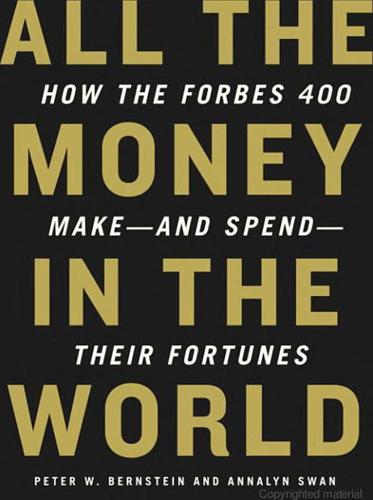
All the Money in the World
by
Peter W. Bernstein
Published 17 Dec 2008
* * * 2000 from the pages of Forbes Ted Turner, founder of CNN, advocates prairie dog rights and tours his extensive land holdings out West in a Chevy Suburban emblazoned with a SAVE THE HUMANS bumper sticker. (2000 net worth: $9.1 billion) Amazon’s Jeff Bezos reads the Declaration of Independence to himself every Fourth of July. (2000 net worth: $4.7 billion) William Cook, who made his fortune from medical devices such as catheters and stents, is a former Chicago cabbie and onetime tour-bus driver for John Mellencamp. (2000 net worth: $1.1 billion) Ernest Gallo of Gallo wine kayaked on a trip to Turkey with his family—at age ninety. (2000 net worth: $800 million) * * * Perhaps the most immediate question facing second and third generations of inherited wealth is this: How does an heir who will inherit such a vast sum of money keep his or her feet on the ground? A century before Warren Buffett12 disavowed dynastic wealth, Andrew Carnegie was sounding the warning bell: “The parent who leaves his son13 enormous wealth generally deadens the talents and energies of the son and tempts him to lead a less useful and less worthy life than he otherwise would,” Carnegie wrote. As is true of any parenting, one of the keys to producing a successful heir is not to spoil one’s children.
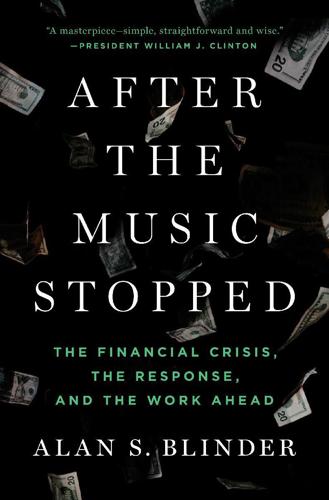
After the Music Stopped: The Financial Crisis, the Response, and the Work Ahead
by
Alan S. Blinder
Published 24 Jan 2013
Unfortunately, their compensation schemes exacerbate these natural tendencies by offering them the following sort of go-for-broke incentives when they place financial bets: Heads, you become richer than Croesus; tails, you get no bonus, receive instead about four times the national average salary, and may (or may not) have to look for another job. These are bright young people, not dummies, and many of them have no families to support. Faced with such skewed incentives, they place lots of big bets. If heads come up, they acquire dynastic wealth. If tails come up, OPM absorbs almost all the losses. Whoever dreamed up this crazy compensation system? It’s a good question, and the answer leads straight to the executive suite. Consider the incentives facing the CEO and other top executives of a large bank or investment bank—but, as I’ll explain shortly, not a hedge fund.

A Generation of Sociopaths: How the Baby Boomers Betrayed America
by
Bruce Cannon Gibney
Published 7 Mar 2017
Indeed, doing so would be downright republican (lowercase), given that low inheritance taxes are oddities in a nation founded, however glancingly, in opposition to inherited privilege. The exemption, now at $5.45 million, can be lowered dramatically, allowing sentimental items to be passed along without abetting dynastic wealth while shoring up the fisc. Other exemptions can be reduced or abolished, including the “step-up” basis at death, a loophole that directs the IRS to exclude any qualifying gains that accrued during a giver’s lifetime, which can be most of them.* When Britain decided its parasitic and antidemocratic gentry needed to go, the mechanism was “death duties.”
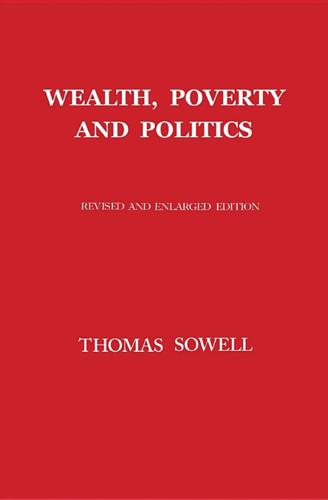
Wealth, Poverty and Politics
by
Thomas Sowell
Published 31 Aug 2015
Frank Bruni, Where You Go Is Not Who You’ll Be: An Antidote to the College Admissions Mania (New York: Grand Central Publishing, 2015), p. 105. 31. “Spare a Dime,” a special report on the rich, The Economist, April 4, 2009, p. 4; “The March of the 400,” Forbes, September 30, 2002, p. 80. 32. Robert Arnott, William Bernstein, and Lillian Wu, “The Myth of Dynastic Wealth: The Rich Get Poorer,” Cato Journal, Fall 2015, pp. 461, 467–468. 33. Ibid., p. 470. 34. Ibid., p. 477. 35. Eugene Robinson, “The Fight-Back Plan,” Washington Post, September 20, 2011, p. A17. 36. Carmen DeNavas-Walt and Robert W. Cleveland, “Money Income in the United States: 2001,” Current Population Reports, P60–218 (Washington: U.S.
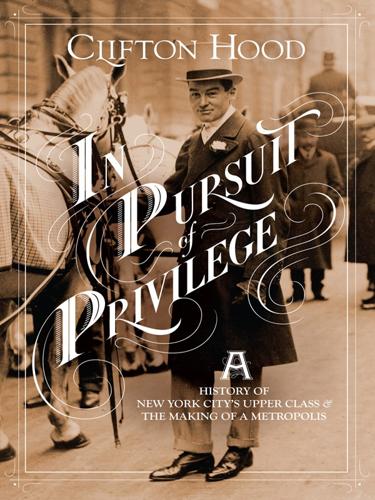
In Pursuit of Privilege: A History of New York City's Upper Class and the Making of a Metropolis
by
Clifton Hood
Published 1 Nov 2016
Yet in his family biography Rich Was Better, Van Rensselaer blames his unchecked hedonism and distorted upper-class values for causing him to attempt suicide and be committed to a mental hospital due to his alcoholism and bipolar disorder.72 Eve Pell’s family owned much of what is now the Bronx and Westchester County in the seventeenth century, belonged to the Four Hundred in the late nineteenth century, and remain socially prominent today. In her 2009 memoir, Pell asserts that their dynastic wealth and privilege “brought with it a very close-minded ethos.”73 “We grew up feeling entitled and more deserving than others,” an attitude that she now regards as “curiously un-American.”74 We took for granted a system antithetical to the American dream: instead of sons outdoing fathers through better education and diligent endeavor, fathers lived better than their children.

Money Changes Everything: How Finance Made Civilization Possible
by
William N. Goetzmann
Published 11 Apr 2016
Excavations in 1976 of the Tomb of Lady Fu Hao, a queen and general of the Shang dynasty. Archaeologists have been studying the Fu Hao trove since its discovery, but one of the prosaic details of the burial is of great interest to Chinese financial history—the 7,000 cowrie shells. The warrior queen was buried with all the trappings of dynastic wealth—magnificent animal-shaped bronze vessels decorated with mythical beasts, exquisite figurative jades, even her personal slaves and attendants—why also these simple white shells? In all likelihood, they represented an even purer form of wealth—they were money. What Fu Hao could not take with her into the afterlife, she perhaps intended to buy.